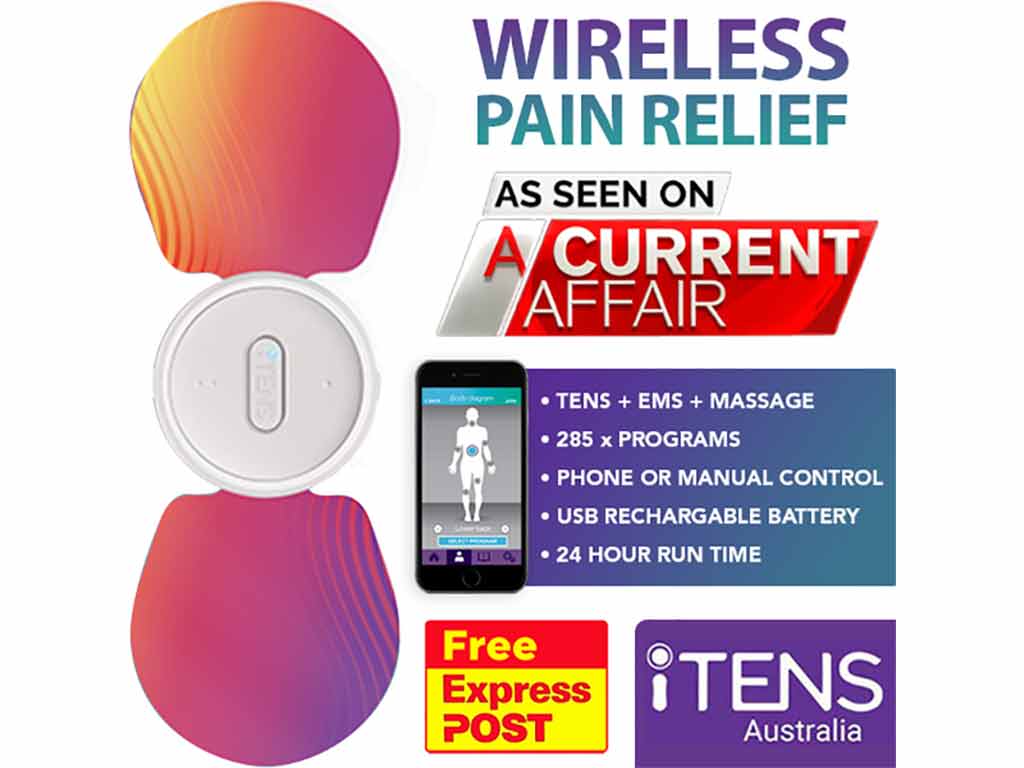
Transcutaneous Electrical Nerve Stimulation or TENS machines offer pain relief for various conditions. Devices like the iTENS and Neurotrac TENS machines are portable to help manage pain on the go. However, there are several differences between the two that can impact the efficiency of pain management. One is the type of device with iTENS that is completely wireless. Others are intensity levels and modes of operation, which can help different types of pain.
A TENS machine sends mild electrical currents through the skin to stimulate the nerve fibres. This helps reduce pain perception by blocking pain signals and releasing endorphins, the natural pain relievers of the body. Moreover, it helps treat acute and chronic conditions, like arthritis, bursitis, tendinitis, muscle aches, and neuropathic pain. This article will compare the features, programs, and operation of Neurotrac and iTENS devices. This includes their levels of intensity, ease of use, and battery life.
Neurotrac TENS Machine vs iTENS – Device Type and Features
TENS units come in two types: wired and wireless. The Neurotrac TENS machine is a traditional device that utilises wires or cables. It has two channels that allow for the simultaneous stimulation of multiple pain areas. Additionally, the device has a handheld controller that allows for the adjustable settings of intensity, mode, and duration. The screen features a bright backlight LCD for easy reading in dark conditions.
On the other hand, iTENS is a completely wireless TENS device that uses Bluetooth technology for portability and convenience. The device connects remotely to a smartphone to access the settings and treatment modes. Thus, the display of iTENS is more user-friendly, with a wide touchscreen interface and coloured screen. In addition, iTENS is single-channel, but the app can control four devices at once.
Other features of the devices include a timer and tracker. The timer controls the duration of the TENS therapy session. This is to prevent overstimulation and irritation of the nerves. Meanwhile, the tracker records and stores data from each treatment session. This helps users monitor their progress and adjust therapy settings accordingly.
Advantages of a Wireless Device
- A wireless TENS machine provides greater convenience and mobility as it does not require any cables.
- It offers maximum flexibility, as they can be worn discreetly under clothing and without the restriction of wires.
- A wireless TENS unit can be used in various sessions, including during work, exercise, or physical therapy.
- It eliminates the risk of accidental shocks or getting tangled in wires, providing a safer and more comfortable experience.
- It enables faster pad placement, including hard-to-reach areas.
- The device presents a wide range of preset treatments through the smartphone app.
- It is more cost-effective due to the reduced need to buy replacement parts.

Neurotrac TENS Machine vs iTENS – Levels of Intensity and Modes
The iTENS and Neurotrac TENS machine has adjustable intensity levels for mild to severe pain. This allows users to control the strength of the electrical pulses based on their pain level. Neurotrac features 11 pre-set pain programs for ease of use. Moreover, the modes are predetermined settings, providing automatic stimulation patterns.
The common programs of TENS are burst mode, modulation mode, and constant mode. The burst mode provides short pulses, while the modulation mode produces changing pulses. The constant mode sends continuous stimulation for a set period. These selectable pulses enable individuals to start the therapy immediately with a few touches of a button.
Meanwhile, iTENS offers ten intensity levels and 26 treatment modes according to pain areas and health conditions. This covers joints like shoulders, knees, elbows, and ankles, as well as wider areas like the back, abdomen, and legs. These programs are accessible through the iTENS app. Lastly, the adjustable frequency or pulse rate allows users to manage pain, whether chronic or acute.
Comparing the Effects of Low Frequency and High Frequency
Low-frequency TENS delivers 1-10 Hz, which triggers the release of endorphins. The electrical stimulation will take longer to have an effect but will continue once the device is removed. Thus, it is suitable for chronic conditions such as sciatica and fibromyalgia. Additionally, it delivers more comfortable rhythmic pulses that help relax the surrounding muscles.
In contrast, high-frequency TENS delivers 50 to 150 Hz. It stimulates gating channels in the spinal cord to close, blocking pain signals from reaching the brain. This level may produce stronger and more noticeable pulses. It is suitable for acute pain like muscle spasms, injuries, and postoperative pain.

Neurotrac TENS Machine vs iTENS – Operation and Ease of Use
The operation of iTENS and Neurotrac TENS machines may differ due to the differences in the device type and control. Neurotrac requires the set-up of wires to the adhesive electrode pads. In using traditional units, make sure to secure the wires with no loose ends to avoid burns. Then, place the pads on the pain area and turn on the machine.
To operate iTENS, peel the cover of the electrodes and place them directly on the body. Press the power button to start the treatment. The device can be operated independently or through a smartphone. Users may choose the manual mode to customise the program or use the pre-set modes.
Furthermore, the ease of use of TENS machines may depend on the preferences of individuals. For example, some prefer the simplicity of a handheld unit by pressing the buttons until they reach the desired effects. Others may opt for the convenience of a wireless unit with more functionalities through the app.
Battery Life and Performance
The battery life plays a significant role in the effectiveness of TENS therapy. Long power helps sustain long sessions. On the other hand, weak batteries may not provide sufficient or effective effects. Many standard devices, like Neurotrac, use 9v replaceable batteries.
The iTENS utilises a rechargeable lithium-ion battery. The total running time is 24 hours before needing recharging. This makes iTENS more energy and cost-efficient, as it eliminates the need for frequent battery replacement. Moreover, these devices display the battery symbol to indicate if it needs fresh sets or charging. It helps ensure adequate power for optimal performance.
Conclusion
TENS provide an effective, non-invasive method of pain relief. The iTENS and Neurotrac TENS machines effectively treat acute and chronic pain. However, advanced features can significantly impact pain management techniques. For example, wireless TENS allows faster electrode pad placement without the hassle of wires. It enables pain relief on the go without inhibiting the range of motion. Additionally, the therapy is accessible through the app with flexible options, such as customisation and selectable modes.
TENS devices also have adjustable intensity to cater to different types of pain. They are safe medical devices that are convenient and easy to use. Additionally, it is vital to consider the battery life when choosing a TENS unit. Knowing these considerations can help make an informed decision. It is best to consult a professional before starting TENS therapy. TENS machines are available online, such as iTENS Australia for iTENS.







